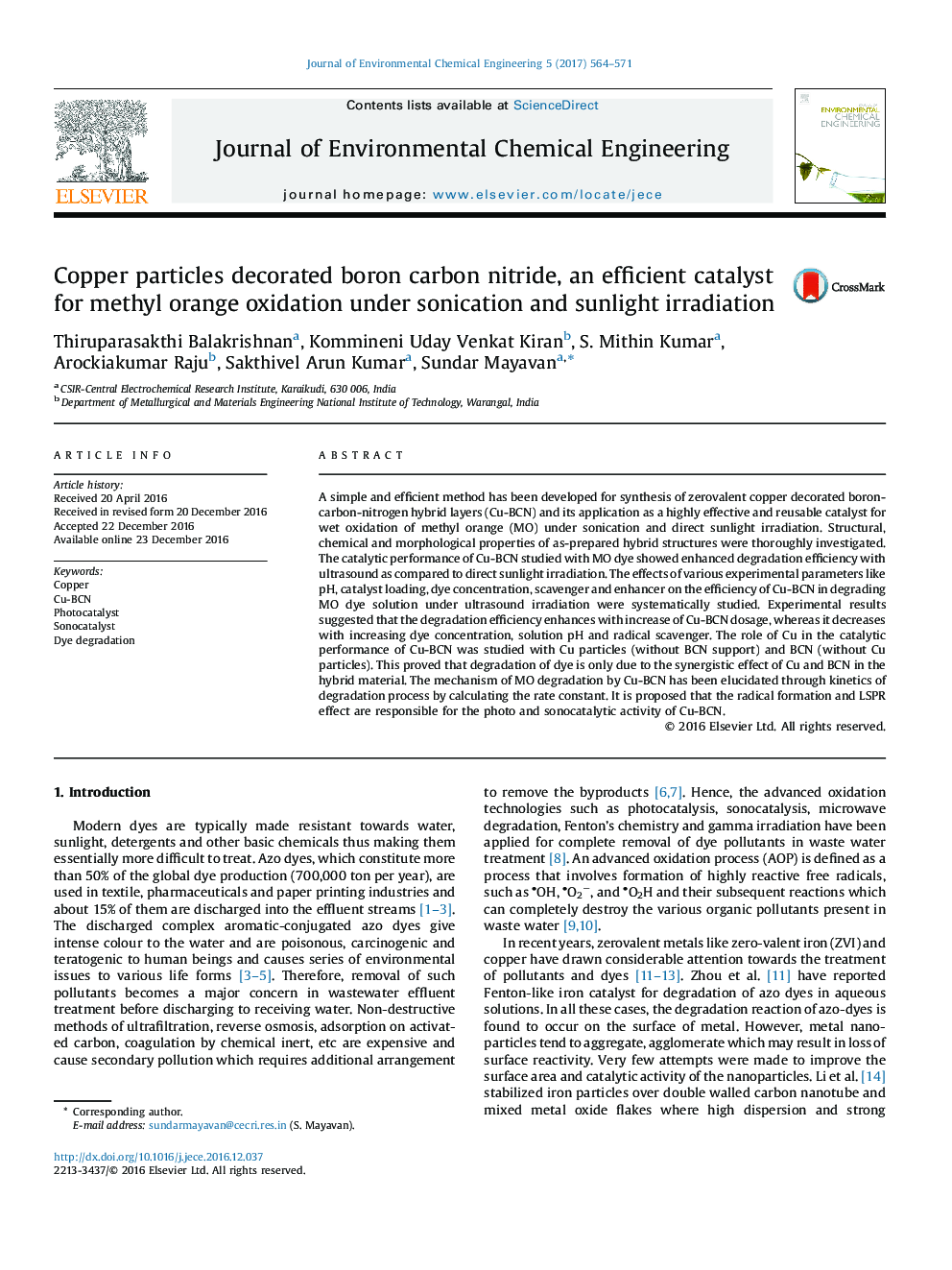| Article ID | Journal | Published Year | Pages | File Type |
|---|---|---|---|---|
| 6477420 | Journal of Environmental Chemical Engineering | 2017 | 8 Pages |
A simple and efficient method has been developed for synthesis of zerovalent copper decorated boron-carbon-nitrogen hybrid layers (Cu-BCN) and its application as a highly effective and reusable catalyst for wet oxidation of methyl orange (MO) under sonication and direct sunlight irradiation. Structural, chemical and morphological properties of as-prepared hybrid structures were thoroughly investigated. The catalytic performance of Cu-BCN studied with MO dye showed enhanced degradation efficiency with ultrasound as compared to direct sunlight irradiation. The effects of various experimental parameters like pH, catalyst loading, dye concentration, scavenger and enhancer on the efficiency of Cu-BCN in degrading MO dye solution under ultrasound irradiation were systematically studied. Experimental results suggested that the degradation efficiency enhances with increase of Cu-BCN dosage, whereas it decreases with increasing dye concentration, solution pH and radical scavenger. The role of Cu in the catalytic performance of Cu-BCN was studied with Cu particles (without BCN support) and BCN (without Cu particles). This proved that degradation of dye is only due to the synergistic effect of Cu and BCN in the hybrid material. The mechanism of MO degradation by Cu-BCN has been elucidated through kinetics of degradation process by calculating the rate constant. It is proposed that the radical formation and LSPR effect are responsible for the photo and sonocatalytic activity of Cu-BCN.
